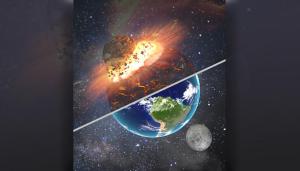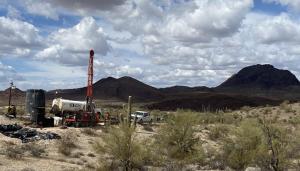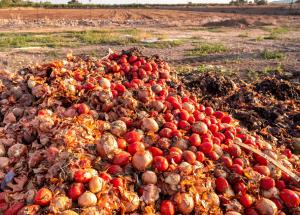LAB REPORT
Science and Technology Making Headlines
Feb. 18, 2022


Extra padding in football helmets can reduce the force being felt by the head as a whole.
Not all heads are the same
A part of football science that has been studied extensively is how best to protect football players’ brains from those collisions.
One person working on this is William Moss, a physicist at Lawrence Livermore National Laboratory. Working with colleagues at Boston University, he has concussed mice, designed computer models, experimented with synthetic heads filled with brain analogues he compares to tofu, and come to some important conclusions.
One major discovery has been that not all types of head impacts are the same. If you hit mice with what he calls a “focal deposition of energy” – roughly the equivalent of banging them on the head with a rock – they all become concussed. But when his team hit them with an equally powerful shock wave, he says, “none were concussed.”
The reason, they found in their computer models and tofu-brain experiments, was that focused deposition of energy causes “a bloom of shear stress that goes into the brain. It’s the shear stress that causes the concussion,” he says.
Designing helmets to distribute impact forces and prevent concussions isn’t necessarily enough to protect against chronic traumatic encephalopathy. Rather, they also need to reduce the force being felt by the head as a whole. The answer to that is padding. “That’s basically how helmets work,” Moss says.


Evidence from the analysis of lunar samples suggest that although the Earth and moon formed from a giant impact, they mostly retained their primordial abundances of volatile elements, including water. Image by Adam Connell/LLNL.
Earth’s take on water
Earth's supply of water is incredibly important for its ability to sustain life, but where did that water come from? Was it present when Earth formed or was it delivered later by meteorites or comets from outer space?
The source of Earth's water has been a longstanding debate and Lawrence Livermore scientists think they have the answer - and they found it by looking at rocks from the moon.
Since the Earth-moon system formed together from the impact of two large bodies very early in solar system history, their histories are very much linked. And since the moon lacks plate tectonics and weathering, processes that tend to erase or obscure evidence on Earth, the moon is actually a great place to look for clues to the history of Earth's water.
"Earth was either born with the water we have, or we were hit by something that was basically pure H2O, with not much else in it. This work eliminates meteorites or asteroids as possible sources of water on Earth and points strongly toward the 'born with it' option," said cosmochemist Greg Brennecka, who was involved in the research.


La Paz Scandium and Rare Earth Project located in La Paz County, Arizona. Image courtesy of Western Rare Earths.
Raring to go
Lawrence Livermore, Penn State (PSU) and University of Arizona researchers are partnering with industry collaborator Western Rare Earths to use a naturally occurring protein to extract and purify rare earth elements (REEs) from abundant, domestic ore-based feedstocks and waste materials without harming the environment. It could offer a new avenue toward a more diversified and sustainable REE sector for the United States.
Domestic sourced and processed REEs are essential for American competitiveness in the clean energy and high-tech industries. These rare earth and other critical minerals are used in many devices vital to a high-tech economy and national security, including computer components, high-power magnets, wind turbines, mobile phones, solar panels, superconductors, hybrid/electric vehicle batteries, LCD screens, night-vision goggles and solid oxide fuel cells. To date, the chemical processes used to extract, separate and purify REEs are harmful to the environment and not sustainable.
In the project, funded by the Department of Energy's Critical Materials Institute, the researchers turned to the protein lanmodulin, which PSU's Center for Critical Minerals team member Joseph Cotruvo discovered. This discovery enabled a one-step quantitative and selective extraction of REEs from electronic waste and pre-combustion coal—capabilities that other chemical extraction methods do not offer.


Agricultural waste can be heated high enough to convert biomass into hydrogen and carbon dioxide.
Walk the talk
A startup, springing from research at Lawrence Livermore, plans to build a new type of fuel-producing plant in California’s fertile Central Valley that would, if it works as hoped, continually capture and bury carbon dioxide. The facility, developed by Mote of Los Angeles, would use the mounds of agricultural waste produced on the state’s sprawling almond orchards and other types of farms. It would heat leftovers like tree trimmings and fruit pits to temperatures above 1,500 ˚F, hot enough to convert the biomass into hydrogen and carbon dioxide.
The idea for Mote sprang from a research effort that took shape several years ago when scientists at Lawrence Livermore tried to solve a conundrum facing California.
Toward the end of his administration in 2018, Gov. Jerry Brown issued an executive order that, while nonbinding, set a goal of achieving “carbon neutrality” across every sector of the state’s economy by 2045. The riddle: How could the world’s fifth-largest economy achieve that goal when researchers and businesses have yet to develop affordable and clean ways of growing crops, raising livestock, powering planes and operating other industries?
If companies, states or nations can remove enough greenhouse gas from the atmosphere, they can theoretically balance out the levels they’re continuing to emit, or even achieve a net decrease. By adding systems that captured and stored the resulting carbon dioxide, this technique promised to offset the state’s ongoing emissions.
It was the best option for removing the greenhouse gas “from an environmental and economic perspective,” says Joshuah Stolaroff, an author of LLNL’s report. In March 2020, Stolaroff left LLNL and he and Mac Kennedy co-founded Mote to build a full-size facility to do it. “This is my attempt to walk the talk,” Stolaroff says.


LLNL researchers have used a unique movie-mode dynamic transmission electron microscopy system to characterize the dynamics of micro bubbles.
They call them mini bubbles
The formation and collapse of microscopic bubbles is important in a wide range of fields as both a potential mechanism behind tissue damage, such as in cases of blast-wave-induced traumatic brain injury, and as a useful tool for technology applications, such as mechanical properties evaluation, nanomaterials manipulation and surface cleaning.
Nanobubbles have been of particular interest in these areas because despite the small amount of energy needed for formation, their extreme localization opens up the potential for outsized impacts. However, understanding of the dynamic response in such small-scale bubbles has been limited by the experimental challenges associated with probing down to the nanoscale.
But LLNL scientists have taken a unique approach to characterize the dynamics of micro and submicron bubbles using a unique movie-mode dynamic transmission electron microscopy system, which was specially built to image with short electron pulses generated by a highly tunable laser-pulse train.





